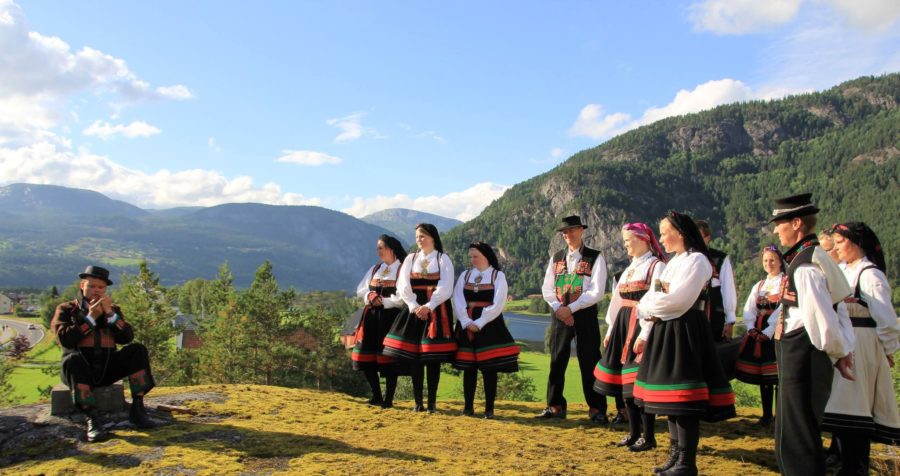Sylvartun – the traditional hub of Setesdal

Background
The folk music and dance in Setesdal enjoy an unbroken tradition from the past. The tradition has been exposed to external influences that have, at times, been threatening: For examples religious interference, and in later times, global cultural expressions.
Most people from Setesdal, have dance, playing of music, singing, and stevjing as important parts of their identity. Stevjing is a special back-and-forth singing of stev (short poems) to each other at social gatherings. Others who are interested in the Setesdal traditions, use these expressions in an artistic context. The music and dance leaves room for individuality and variation. They are used at home, in cultural schools, at the pub, and on the stage. Stev contributes to preserving the native dialect of Norwegian that is spoken in Setesdal.
In earlier times, the traditions were passed down in the home, whereas today it is more common with organised teaching in institutions.
There are about 3500 residents in the three municipalities of Bygland, Valle, and Bykle. In 2015, about 1% of the residents are active performing instrumental musicians (fiddlers, Jew’s harpists, etc.), about 5% are singers, and about 15% are dancers. All of the instrumental musicians can dance, and most are able to perform stev.
Above: Jew’s harp players together with local dancers in the valley of Setesdal.
Objectives
Establish a local centre for folk music and dance, which:
- Is a meeting place that spans generations
- Makes the traditions accessible for various groups
- Makes the traditions known to new users, with a special emphasis on children and youths

Sylvartun – centre for folk music and folk dance in Setesdal
How it was done
Since the project’s birth in 2014, the centre has hosted a broad range of folk music and dance activities. The following events are examples of its potentials in the future:
Dissemination and teaching for children, youths, and seniors
→Teaching in Valle cultural school
→Kvedarstunder (singing sessions), hosted by Valle kulturskule
→Concerts and courses in singing, dance, and instrumental folk music, hosted by Setesdal spelemannslag
→Group harding fiddle playing sessions, every other Wednesday
→Yearly Christmas gathering for Setesdal spelemannslag
Dissemination in general
→Album launch of folk music production
→Music beyond Borders, a media promotion
→Seminar in 2017 to celebrate the 100th anniversary of Arne Bjørndal’s work gathering folk music in Setesdal.
→Seminar on The Rammeslåttene. In 2015 in conjunction with Setesdalsfestivalen.

Hallvard T. Bjørgum, the well-known harding fiddle player from Setesdal
Other related activities
→Recording and production of 3 music and film recordings
→Office space and actice support for projects related to Setesdals traditions
In addition to the aforementioned activities, a diversity of institutions in the region have had their venues at the centre for folk music and folk dance, for instance museum, university, university college, high school, the primary school and the local municipality.
Summary
With the establishment of a centre for folk music and folk dance, the inhabitants and performers have an arena that provides a meeting place that crosses generations. Setesdal spelemannslag (the local folk music association), for instance, uses the centre as a regular meeting place and clubhouse.
The centre serves an important function in the local milieu. The house gives a sense of belonging, in that artists can practise in an appropriate environment.

Interior of Sylvartun
